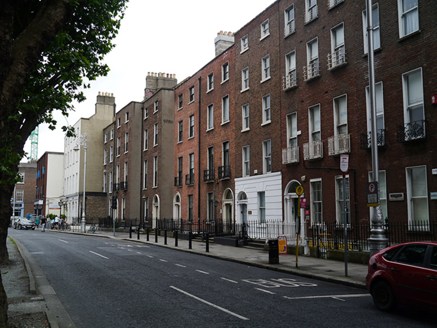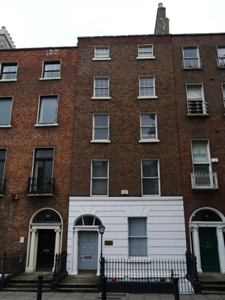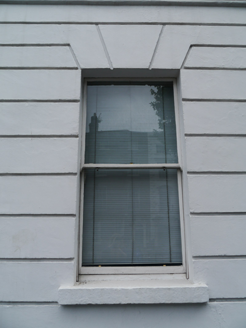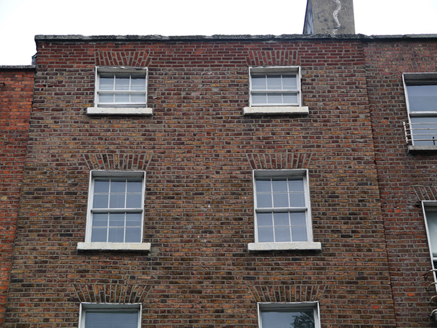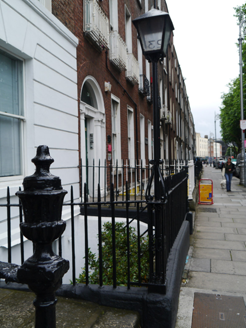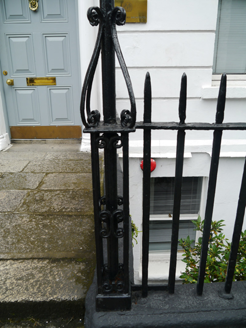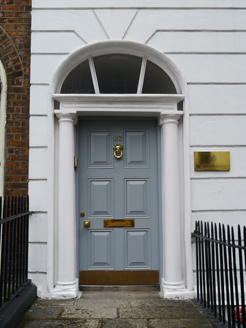Survey Data
Reg No
50100471
Rating
Regional
Categories of Special Interest
Architectural, Artistic
Original Use
House
In Use As
Office
Date
1790 - 1830
Coordinates
316559, 233337
Date Recorded
17/07/2016
Date Updated
--/--/--
Description
Attached two-bay five-storey former house over basement, built c. 1810, with bow and recent two-storey extension to rear. Now in use as offices. Pitched replacement slate roof to front, hipped to west end, behind rebuilt brick parapet with granite copings; replacement slate hipped roof to rear perpendicular to street, with terracotta ridge tiles, and with recent velux windows and glazed lanterns to middle of roof. Two shouldered rendered chimneystacks to east with terracotta pots, and projecting chimneystack to east end of rear elevation lacking pots. Concealed rainwater goods. Flemish bond red brick walling to upper floors, painted rendered band-rusticated ground floor, painted smooth-rendered basement, and smooth rendered rear elevation. Square-headed window openings diminishing in height to upper floors, with patent reveals and painted masonry sills. Timber sliding sash windows, six-over-six pane to third floor and three-over-three pane to top floor, one-over-one pane elsewhere, having cavetto horns to ground floor and basement; Wyatt-style windows to rear. Round-headed principal doorway with pole-moulded reveal, painted masonry doorcase inset with entablature, panelled frieze, Doric columns, three-pane fanlight and replacement six-panel timber door with brass furniture and kick-plate. Granite platform with two steps to street level, and basement area enclosed by wrought-iron railings, railings to west side of platform having decorative cast-iron corner post and east side having lamp standard set on decorative wrought-iron corner post, on moulded granite plinth. Rear of plot on Fitzwilliam Lane enclosed by recent steel vehicular gate.
Appraisal
No. 23 Baggot Street Lower is sited within a well-preserved group of late Georgian houses lining the north side of the street. Curiously although it is a storey higher it maintains a parapet level with the adjoining property to the east. It is further distinguished by the horizontally banded treatment of the ground floor, the diminishing proportions of the fenestration, and the bowed rear elevation that projects from its neighbours. The building is enhanced by retention of its Doric doorcase, setting features and the retention of timber sash windows and typical setting and ironwork to the street frontage. It thus makes a worthy contribution to the architectural heritage of Baggot Street Lower and the wider Georgian core of south Dublin. The development of this street was planned in the late 1780s and approved by the Wide Streets Commissioners in 1791. Characterized by rhythmic proportions and graded fenestration, the austere and relatively modest facades of this row are aggrandized by the width of the tree-lined street, as the building line steps back considerably from No. 18 to the west, expanding to a breadth of 30m (100ft).
